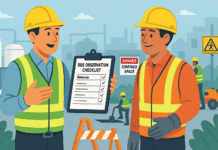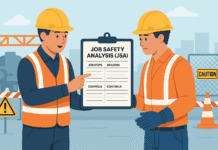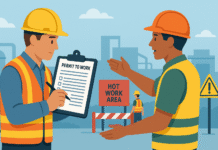
Reliance Industries Safety Officer Interview Questions and Sample Answers
Safety officers play a pivotal role in maintaining a secure work environment within organizations. Within Reliance Industries, safety is paramount, making the role of a Safety Officer crucial to ensure compliance with regulations and maintain a hazard-free workplace.
Key Skills and Qualities Required
Technical Expertise
Safety Officers need a profound understanding of safety protocols, risk assessment methodologies, and knowledge of safety equipment to mitigate potential risks effectively.
Communication Skills
Effective communication is essential in conveying safety guidelines and procedures to employees across all levels. Clear and concise communication fosters a culture of safety within the organization.
Problem-Solving Abilities
Safety Officers encounter various challenges daily. Being able to analyze situations swiftly and devise immediate solutions is a critical skill for this role.
Here are some interview questions for a Safety Officer position at Reliance Industries along with sample answers:1. Can you describe your experience in implementing safety protocols in a large industrial setting?
Sample Answer: “In my previous role at [Previous Company], I was responsible for overseeing safety protocols in a large industrial setting. I conducted regular safety audits, implemented training programs for employees, and collaborated with different departments to ensure compliance with safety standards. I also initiated safety campaigns to raise awareness and reduce workplace incidents.”
2. How do you stay updated with current safety regulations and industry best practices?
Sample Answer: “I am committed to staying abreast of the latest safety regulations and best practices by regularly attending seminars, workshops, and industry conferences. I actively participate in professional forums and maintain memberships in relevant safety associations. Additionally, I regularly review industry publications and subscribe to newsletters to stay informed about any updates or changes in safety standards.”
3. Can you discuss a challenging situation you encountered related to workplace safety and how you handled it?
Sample Answer: “While working at [Previous Company], I encountered a situation where there was a resistance among employees towards wearing proper personal protective equipment (PPE). To address this, I organized interactive training sessions, highlighting the importance of PPE through real-life examples. I also involved team leaders to encourage and reinforce the use of PPE, which led to a significant improvement in compliance.”
4. How do you ensure that safety procedures are effectively communicated and understood by all employees?
Sample Answer: “I believe in a multi-faceted approach to communicate safety procedures. Apart from conducting regular training sessions, I utilise visual aids such as posters and infographics, translate materials into multiple languages if necessary, and hold open forums where employees can ask questions and share concerns. I also encourage a culture of open communication where employees feel comfortable reporting safety issues without fear of reprisal.”
5. What strategies do you employ to create a safety-centric culture within an organisation?
Sample Answer: “To foster a safety-centric culture, I focus on continuous education and reinforcement. I establish clear safety goals, recognise and reward employees who demonstrate exemplary safety practices, and actively involve employees in safety committees or initiatives. Additionally, I promote a ‘safety first’ mindset by leading by example and encouraging teamwork in maintaining a safe work environment.”
6. How do you conduct risk assessments and implement control measures in a dynamic industrial environment?
Sample Answer: “In conducting risk assessments, I adopt a comprehensive approach by evaluating potential hazards, identifying their likelihood and severity, and prioritising areas that require immediate attention. I involve cross-functional teams to gather diverse perspectives and then develop control measures, which may include engineering controls, administrative controls, or personal protective equipment. Regular reviews ensure the effectiveness of these measures.”
7. Can you discuss a time when you successfully improved safety performance metrics within a company?
Sample Answer: “At a previous company, I noticed a concerning trend in accident rates. To address this, I initiated a thorough analysis of incidents, identifying root causes and trends. I then devised targeted safety training programs addressing those specific areas. This proactive approach resulted in a significant decrease in accident rates over the subsequent months, demonstrating tangible improvement in safety performance metrics.”
8. How do you ensure compliance with safety regulations without hindering operational efficiency?
Sample Answer: “Balancing safety compliance and operational efficiency is crucial. I achieve this by collaborating closely with operational teams to understand their processes and identifying ways to integrate safety measures seamlessly. By involving them in the development of safety protocols and providing solutions that enhance both safety and efficiency, we can achieve compliance without impeding productivity.”
9. In your opinion, what are the key elements of an effective safety training program?
Sample Answer: “An effective safety training program should be comprehensive, engaging, and tailored to the specific needs of the workforce. It should cover not only regulatory requirements but also practical scenarios and real-life examples to make the information relatable. Interactive elements, such as simulations or hands-on exercises, can significantly enhance retention. Regular updates and refresher sessions ensure that the information remains fresh and relevant.”
10. How do you handle disagreements or resistance from employees regarding safety procedures?
Sample Answer: “I believe in open dialogue and understanding the concerns of employees. I listen attentively to their perspectives and concerns, addressing any misconceptions and providing a clear rationale behind safety procedures. By involving them in the decision-making process and demonstrating the benefits of these procedures, I aim to gain their cooperation. If needed, I escalate the issue respectfully and collaboratively to find a resolution that ensures both safety and employee comfort.”
11. How do you assess the effectiveness of a safety program, and what metrics do you use to measure success?
Sample Answer: “Assessing safety program effectiveness involves a combination of qualitative and quantitative measures. I track leading indicators such as near-miss reports, safety participation rates, and safety training completion. Lagging indicators like incident rates and severity help gauge the overall impact. Regular audits and feedback mechanisms from employees provide qualitative insights into the program’s effectiveness, allowing for necessary adjustments to ensure continual improvement.”
12. Can you discuss a time when you had to implement innovative safety measures to address a specific hazard?
Sample Answer: “In a previous role, we encountered a persistent issue with confined space entry safety. To address this, I introduced innovative remote monitoring systems that allowed real-time observation of confined spaces without human entry. This reduced the need for personnel to physically enter hazardous areas, significantly enhancing safety while maintaining operational efficiency.”
13. How do you promote safety awareness and practices among contractors or third-party vendors working on-site?
Sample Answer: “I ensure that contractors and third-party vendors receive comprehensive safety orientation sessions specific to our site’s hazards and protocols before commencing work. Clear communication of safety expectations, provision of necessary safety equipment, and regular monitoring of their adherence to safety standards are key. I establish collaborative relationships, encouraging open dialogue to address any safety concerns promptly.”
14. What strategies do you employ to keep employees motivated and engaged in maintaining a safe work environment?
Sample Answer: “I believe in a proactive approach to motivation. Recognition programs for safety achievements, involving employees in safety-related decision-making, and creating a ‘safety champions’ initiative to celebrate exemplary safety practices all contribute to fostering a culture of engagement. Regular communication on safety successes, challenges, and the impact of employees’ contributions further reinforces their importance in maintaining a safe workplace.”
15. How do you ensure emergency preparedness and response plans are robust and regularly updated?
Sample Answer: “I regularly conduct scenario-based drills and simulations to test the effectiveness of emergency plans. Feedback from these exercises informs necessary updates to the plans. Additionally, I collaborate with emergency response teams, review incident reports, and stay updated with industry best practices to ensure our emergency preparedness plans remain current and effective.”
16. How do you handle incidents or accidents in the workplace, and what steps do you take to prevent their recurrence?
Sample Answer: “In the event of an incident, my immediate focus is on ensuring prompt medical attention if needed and securing the affected area. I conduct a thorough investigation to identify the root cause using tools like root cause analysis (RCA). Based on findings, I implement corrective actions and preventative measures. Communicating lessons learned to the team and implementing training or procedural changes are crucial in preventing similar incidents in the future.”
17. Can you discuss your experience in fostering a safety culture during large-scale projects or expansions?
Sample Answer: “During large-scale projects, I ensure safety is integrated from the project’s inception. This involves conducting risk assessments specific to the project, providing comprehensive safety training to all involved parties, and regularly monitoring safety performance. I establish clear safety objectives, hold regular safety meetings, and encourage a collaborative approach among all stakeholders to maintain a safety-focused culture throughout the project lifecycle.”
18. How do you ensure compliance with environmental safety regulations alongside occupational safety measures?
Sample Answer: “Environmental safety compliance is as critical as occupational safety. I ensure compliance by staying updated with environmental regulations, conducting environmental risk assessments, and integrating environmental considerations into safety protocols. I collaborate with environmental experts to develop comprehensive procedures that encompass both occupational and environmental safety aspects, ensuring the organisation complies with all relevant regulations.”
19. What strategies do you implement to encourage employees to actively participate in safety improvement initiatives?
Sample Answer: “To encourage active participation, I promote a sense of ownership among employees by involving them in safety committees or suggestion programs. I value their input, actively seek their feedback, and implement feasible suggestions. Recognising and rewarding proactive safety behaviours also motivates employees to actively engage in safety improvement initiatives, fostering a culture of continuous improvement.”
20. How do you adapt safety protocols to changing technologies or processes within an organisation?
Sample Answer: “I closely monitor technological advancements and changes in processes that may impact safety. I collaborate with relevant departments to conduct risk assessments on new technologies or process changes. I ensure that safety protocols are updated accordingly, providing necessary training to employees to adapt to these changes seamlessly. Regular reviews and feedback mechanisms help refine safety protocols as technologies evolve.”
Conclusion
In essence, the role of a Safety Officer at Reliance Industries demands a blend of technical expertise, effective communication, and problem-solving skills. Preparing well for the interview by understanding the company’s safety culture and practicing relevant scenarios is key to securing this vital position.
50 HSE Manager Interview Questions and Sample Answers
50 HSE Engineer Interview Questions and Sample Answers
50 HSE Officer Interview Questions and Sample Answers
How Much Salary Do You Want? Interview Question and Answer for Fresher and Experienced Candidates
























